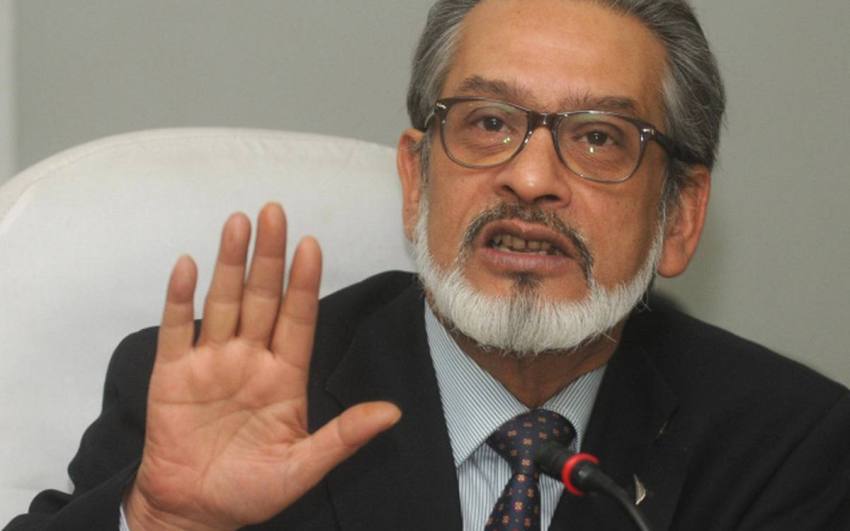Regional

New Delhi: In a recent video interview India’s former chief statistician and the country’s foremost economist Pronab Sen praised the commendable rise of the country’s GDP even after lurking in a dark period amid pandemic, lockdown, many losing their jobs, price hike etc that it is highly a creditable achievement for the country’s economy, exclaimed Sen.
Praising the agriculture sector for playing an important role and most so during the lockdown, Sen feels relieved that this was the only sector that was given the freedom to do anything they want but one shouldn’t undermine the negative points associated with this.
At a time when the country was reeling under pandemic, the burden of the farmers protest just added the woes. Thousands of farmers left their fields and hung around Delhi. Nevertheless, agriculture has grown, which is a good sign, in the sense the agriculture is resilient. “It’s a bad sign because what it’s telling you is that there are too many people in agriculture and even if a large chunk of them move out to do something else, it makes no appreciable difference to what agriculture does,” added Sen.
Also read: Nagaland Killings: Distressing scenes from Nagaland as grief-stricken families bury their loved ones
Another serious issue that has risen and remains hidden from the economic chart is the rise in distress employment. Urban agriculture has seen an appreciable growth, which means people in urban areas have lost jobs and have moved to their ancestral occupation – farming. Many have even opted for farming as the next best alternative as it not only serves their family’s need but would also aid an income.
The growth might reflect a positive sign, yet there are few other sectors that continue to lag behind. Sectors which are person-intensive – like both of these sectors (trade, tourism and restaurants and construction) are still lagging behind. Even if these sectors constitute 23 percent of the GDP, restrictions imposed on them like 50 percent capacity in restaurants, malls, and other public places.
The second quarter GDP constitutes 55-56 percent of private consumption which is still 3.5 percent below pre-pandemic levels. And to return to normal levels, the response to private consumption by the people who have already experienced a loss of Rs 12 lakh crores as per sources. “If employment-intensive sectors like you said, construction and trade hotels and restaurants, if they are not growing then employment isn’t growing and therefore, household aren’t growing. Which is a double whammy. So it is a concern, and much will depending on how this returns to normality,” added Pronab Sen while being questioned on private consumption percentage by Karan Thapar.
“The interesting thing that has happened in this particular GDP footprint, and this is unlike what was happening earlier to this, is that the net indirect taxes have been negative. The reason this is interesting is that precisely over this period, what we had seen was a sharp increase in GST collections, which is a part of the tax component. This implies that subsidies have gone up more than tax collections have. Normally, one would have expected the government to have tom-tommed on this, really gone to town with it… because we are proud of the subsidy we’re putting in and helping consumption along,” quipped Sen.
Highlighting the MSME sector, the statistician was aghast on the crumbling situation which has been facing a blow since the first lockdown.
“So to know what is happening to MSMEs, just looking at the GDP figures isn’t enough. You need to look for corroborative evidence as to what’s going on. The clearest sign is what’s happening to bank lending. Because MSMEs, unlike corporates, do not have access to the capital markets. So practically the entire financing, whether for working capital or for expansion, comes from the banking sector. The banking sector data suggests that there has been very little flow into MSMEs. The latest numbers that the RBI put out for last month suggest an uptick. But that is something we need to take with a pinch of salt because, it’s an 8.5% growth in lending, is because your wholesale price index which represents the cost of production in the MSME has gone up by 12%. So the growth in credit doesn’t even meet the increase in cost,” observed Sen.
Also read: Sheikh Hasina praises late Indira Gandhi for accommodating Bangladeshi refugees in India
What Pronab Sen wants to reflect from the data is that the corporate sector has actually jumped up while other public holdings and private consumption has taken a beating even though the GDP numbers reflect a growth, which cannot be called a broad growth.
Leave A Comment